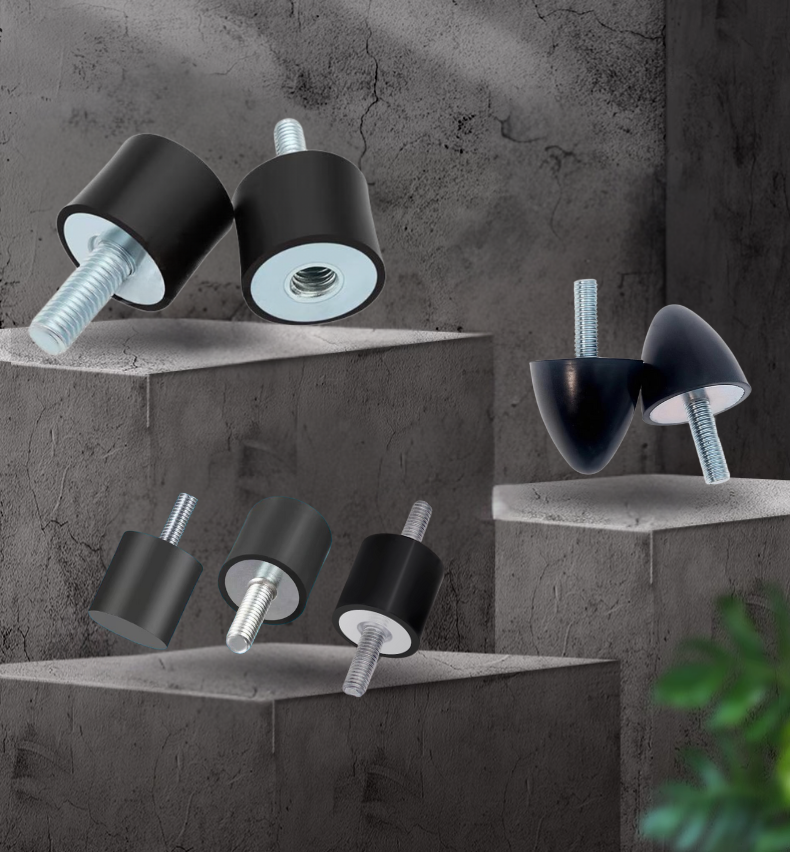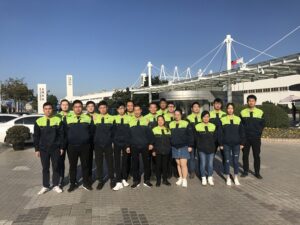What Are the Advantages of Rubber Cylindrical Mounts?
Are you tired of excessive vibration damaging your equipment? You’re not alone. Many industries face the same issue—but rubber cylindrical mounts offer a reliable and cost-effective solution. These mounts are designed to reduce vibration, improve machinery lifespan, and enhance operational safety across various industries.
Rubber cylindrical mounts are engineered to absorb shock and vibration efficiently, protecting mechanical components and reducing maintenance frequency. They help maintain quieter operations and are essential for equipment in industries like HVAC, compressors, pumps, and generators. By providing vibration isolation, they ensure smoother operation, reduce wear and tear, and contribute to overall energy savings.
What Is the Best Material for Anti-Vibration Mounts?
The material of anti-vibration mounts directly affects their performance, durability, and resistance to wear. Natural rubber is commonly used due to its flexibility and shock-absorbing capabilities. For more specialized applications, materials like neoprene, EPDM, or silicone offer enhanced resistance to oil, chemicals, or extreme temperatures. Heavy-duty anti-vibration rubber mounts are designed to withstand high-pressure environments and provide long-term durability.
What Is the Best Material for Vibration Dampening?
Rubber remains the top choice for vibration dampening due to its natural elasticity and damping capability. Rubber vibration isolator pads and mounts efficiently convert vibrational energy into heat, minimizing its transmission to surrounding structures. These mounts are ideal for industrial machinery, motors, and pumps, where reducing vibration and noise is a priority. Depending on the operational conditions, the choice of rubber material, such as neoprene or nitrile, can enhance the mount’s ability to resist oil, extreme temperatures, or environmental factors.
Does Rubber Help with Vibration?
Yes, rubber is an excellent material for vibration control. Rubber isolators are designed to absorb vibrations by compressing and flexing, dissipating the energy generated by motion. This reduces the transmission of vibration to surrounding structures, making rubber isolator mounts highly effective in minimizing noise and mechanical strain. They are commonly used in HVAC systems, power tools, and various machinery to reduce both vibration and noise levels.
What Is the Best Material for Dampening?
For vibration dampening, rubber remains the best option due to its ability to absorb and dissipate energy. Rubber isolator bushings and rubber isolator feet provide excellent damping performance while supporting weight and offering flexibility. These materials are versatile and effective in a wide range of applications, including household appliances, office equipment, and industrial machinery. Rubber’s superior vibration isolation qualities make it an optimal solution for many noise reduction challenges.
Is Rubber Good for Sound Dampening?
Rubber not only controls vibration but also significantly reduces noise. Rubber vibration isolator mounts are frequently used in environments where noise control is essential, such as in audio systems, office equipment, and industrial applications. These mounts minimize the transmission of sound, creating quieter environments and reducing operational disturbances. Rubber’s ability to absorb both vibrations and sound makes it a top choice for sound dampening in residential and commercial applications.
What Is the Best Rubber for Damping?
When it comes to damping, different types of rubber serve different needs. Natural rubber is ideal for general applications, offering a balance of flexibility and performance. Neoprene is well-suited for applications requiring resistance to oil and ozone, while silicone excels in extreme temperature environments. Heavy-duty vibration isolators often use a combination of these rubbers to deliver superior strength and damping, ensuring effective vibration control in harsh industrial conditions.
How Do Rubber Cylindrical Mounts Improve Equipment Longevity?
Rubber cylindrical mounts play a crucial role in extending the lifespan of machinery and equipment by reducing the impact of vibrations and shocks. By protecting sensitive components from wear and tear, these mounts help reduce maintenance needs and downtime. In industries such as HVAC, power generation, and manufacturing, the ability to prolong the lifespan of machinery is essential for improving operational efficiency and reducing long-term costs.
How Do Rubber Cylindrical Mounts Help with Energy Efficiency?
Rubber cylindrical mounts contribute to energy efficiency by minimizing vibration-related energy losses. When vibration is absorbed by the mounts, the energy that would otherwise be lost as mechanical vibration is reduced. This leads to more energy-efficient operation, lower energy consumption, and reduced wear on machinery. Incorporating these mounts into your equipment can not only improve overall performance but also help reduce your carbon footprint.
Summary
Rubber cylindrical mounts are effective, cost-efficient, and versatile solutions for vibration control in a wide range of industries. They provide excellent vibration isolation, reduce maintenance needs, improve operational safety, and contribute to energy efficiency and quieter operations.






